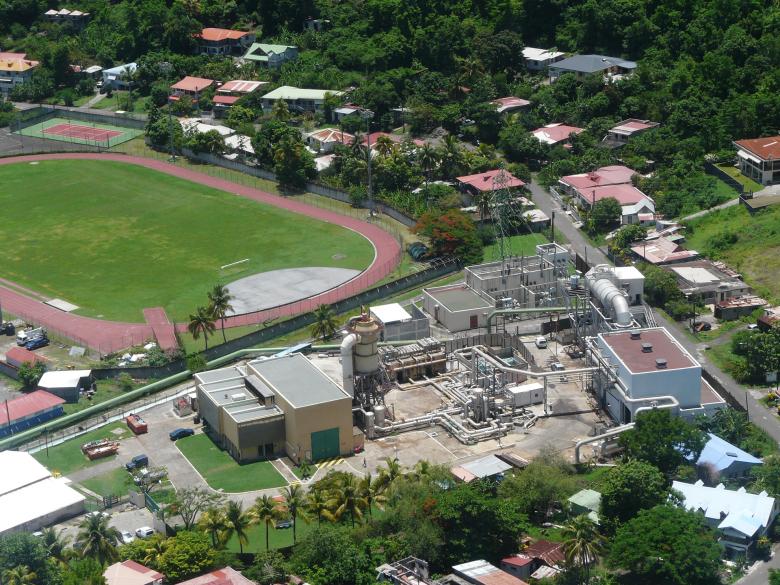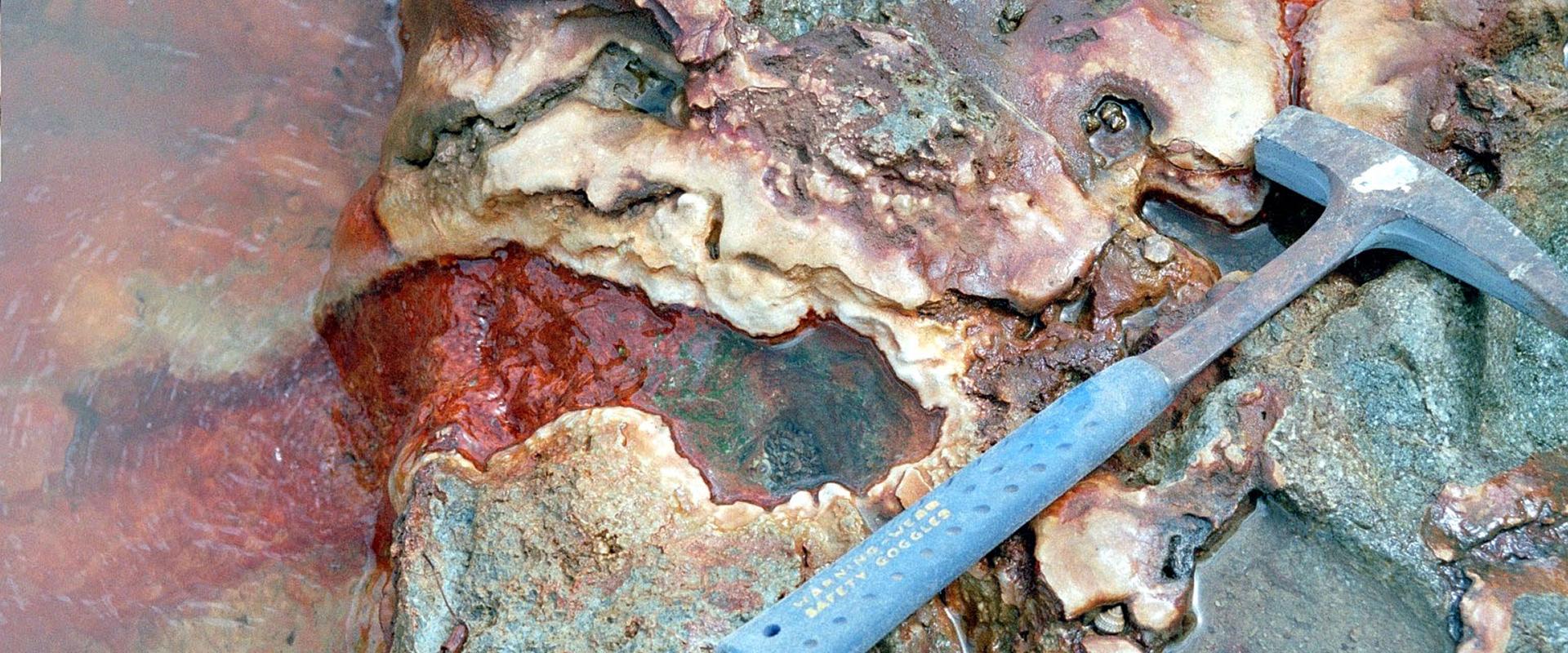
Aerial view of the facilities at the Bouillante geothermal plant (Bouillante, Guadeloupe, 2011).
© BRGM
All the islands of the Eastern Caribbean, from the island of Saba in the north to Grenada in the south, including Guadeloupe and Martinique, depend mainly on fossil fuels for their electricity. In 2021, the proportion of renewable energy was 33.7% in Guadeloupe, 25% in Martinique and 25% in Dominica, but for the other islands it only accounted for 10% or even less. This dependency has a financial cost, but also an ecological impact due to the high greenhouse gas emissions from the fossil fuels used.
To reduce this energy dependency and limit CO2 emissions, it is essential to develop renewable energies. For example, the Guadeloupe region's objective in its multi-annual energy programme (PPE - Programmation Pluriannuelle de l’Energie) is to achieve energy autonomy by 2030. In this context, geothermal energy – the exploitation of underground heat sources – can play a key role as it is non-polluting, renewable, and available 24 hours a day. Moreover, this resource is compatible with tourism because it does not require much space and, above all, it is resilient to climatic events such as hurricanes.
The islands of the Eastern Caribbean are of volcanic origin, with sometimes intense and recent activity (within the last hundred years). There are several types of geothermal energy. The volcanic island context makes it possible to envisage the use of "high enthalpy" geothermal energy to produce electricity, as temperatures in the rock can reach 100 degrees or more, at depths of the order of a kilometre.
Preliminary reconnaissance and exploratory drilling in the Eastern Caribbean indicate the presence of numerous geothermal reservoirs, a potential that remains largely untapped. Indeed, there is only one active power plant in the West Indies, the Bouillante plant in Guadeloupe, which was commissioned in 1986. It has a capacity of 15 megawatts and covers 6-7% of the island's energy mix.
Towards new methods for estimating geothermal resources
As part of a new project which follows on from collaboration that began in 2008 between the Guadeloupe region, ADEME, BRGM and OECS (the Organisation of Eastern Caribbean States), we are developing innovative methods for geothermal exploration in the volcanic island environment.
In particular, the objective is to develop new geophysical imaging techniques adapted to the specificities of the Caribbean islands and notably to the proximity of urban areas, hilly terrain and the sea. Initially, the aim was to validate the added value of the new methods compared to conventional approaches in a known area - the Bouillante field. In a second phase, the focus was on characterising the Bouillante field out at sea, which was not possible with the previous methods.
This work provided a more accurate assessment of the structure of the Bouillante reservoir as well as its structure under the sea. This is because our methodology allows for the simultaneous acquisition and processing of data acquired in the terrestrial and marine environments. Thanks to these tests, it is now possible to envisage a similar study on other Caribbean islands to improve the evaluation of their geothermal resources.







